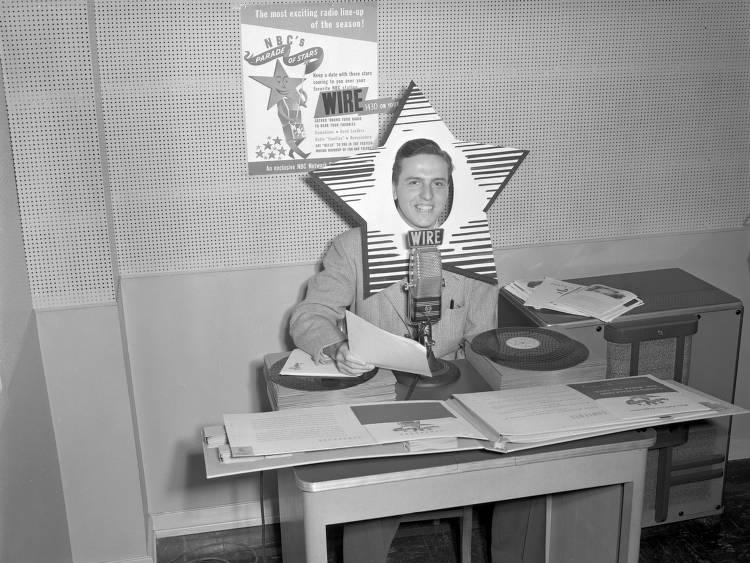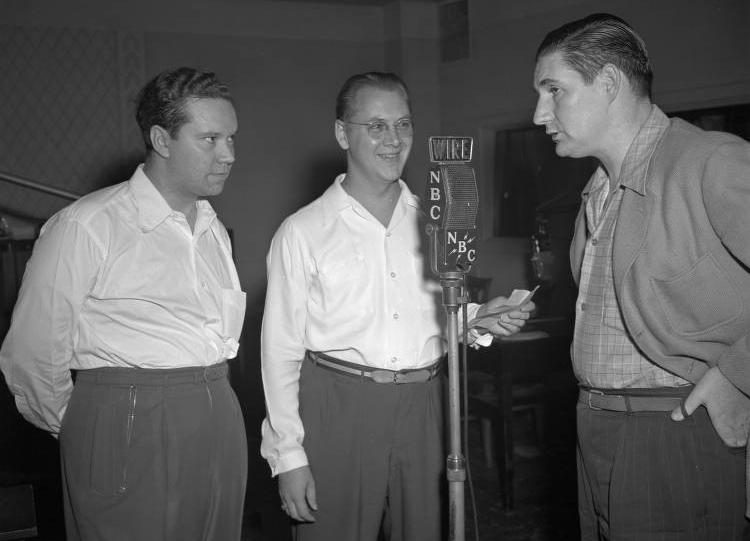Founded by radio pioneers Carl and , radio station WKBF began broadcasting on November 29, 1926, from a Ford automobile showroom on East Washington Street. In December, the station moved its own studio at the Hoosier Athletic Club (also known as the Independent Turnverein Building, 902 North Meridian Street). WKBF’s typical daily program schedule in 1927 included a recipe exchange, market, weather, and farm bulletins, as well as various music programs and the state basketball tourney finals.

To counter WFBM’s competition, WKBF joined with the in May 1927, to broadcast the . Later in July, WKBF broadcast the Jack Dempsey-Jack Sharkey fight from New York’s Yankee Stadium. Since the station was not equipped for live coverage, it presented the fight through recreated wire reports. In September, however, WKBF and WFBM broadcast the Jack Dempsey-Gene Tunney fight live from Chicago, the first network broadcast in the city. The next year, WKBF joined with WFBM in an unsuccessful fundraising campaign to eliminate static from the airwaves.
Curtis Broadcasting Company, incorporated by Curtis Mushlitz and Henry B. Walker of Evansville as well as Noble Watson, purchased WKBF in 1929 and incorporated it as Indianapolis Broadcasting Company with D. E. “Plug” Kendrick as general manager.

The station became an NBC Radio affiliate in 1933. WKBF aired the popular The Nation’s Family Prayer Period produced by (1931-1935), and other programs like Fibber McGee and Molly and Bachelor’s Children. In September 1934, WKBF broadcast nationwide a program of music and news from the American Central Life Insurance Company auditorium, which was transmitted by shortwave to Rear Admiral Richard Byrd at his Little America post in Antarctica.
To avoid confusion with WFBM, the Federal Communications Commission changed the station’s call letters to WIRE in November 1935. The FCC also approved the sale of WIRE in December 1936 to Central Newspapers, Inc., whose president relocated the station in 1940 to new studios on the top floor of the . WIRE, which broadcasted over 60 programs daily, received a new frequency assignment (1430 AM) from the FCC in 1941. Eight years later, the station moved to the Star-News Building where it joined forces with the local papers on newsgathering and reporting.
Pulliam’s ownership led to an expanded community role for the station. During the 1937 Ohio River flood, WIRE and WFBM broadcast news, emergency bulletins from relief agencies, and personal messages. They also led local appeals for supplies and money.
In the 1940s, WIRE was the first station to use a pack transmitter, a portable remote unit that allowed announcers to broadcast within a 1.5-mile radius of the studio. It also presented public service programs such as “Welfare Column of the Air” and “Inside the Indiana State Capitol.”
Pulliam sold WIRE to Joseph C. Amaturo in July 1960, who sold the station in 1964 to newspaper publishers Len and Burrell Small of Kankakee, Illinois.
During the 1970s, WIRE received numerous awards. named WIRE, among seven others, as Station of the Year. The International Radio Programming Forum named it Country Music Station of the Year for 1968, 1970, 1972, 1974, and 1975.
The station, which underwent several format and call letter changes in the late 1980s and became WCKN in 1992, maintaining its studios at 4560 Knollton Road for a time. Two years later, in 1994, the station became WMYS and focused on broadcasting adult standard “classic” music. The station was also home to Indianapolis Ice Hockey broadcasts. In 2001, the station switched its format again, taking on the WXNT label and emphasizing news and talk radio (“N” standing for news and “T” for talk).
WXNT maintained this format for nearly 12 years before morphing into an exclusively sports-focused radio station in 2013. This shift was boosted by WXNT’s ability to broadcast Notre Dame football games in Indianapolis starting that same year. The move was paired with the station’s new affiliation with CBS Sports Radio. WXNT operations came under Cumulus Media on March 1, 2019. By 2020, WXNT operated out of a North Meridian Street studio with its Cumulus sister stations (WZPL and WNTR).

Help improve this entry
Contribute information, offer corrections, suggest images.
You can also recommend new entries related to this topic.

